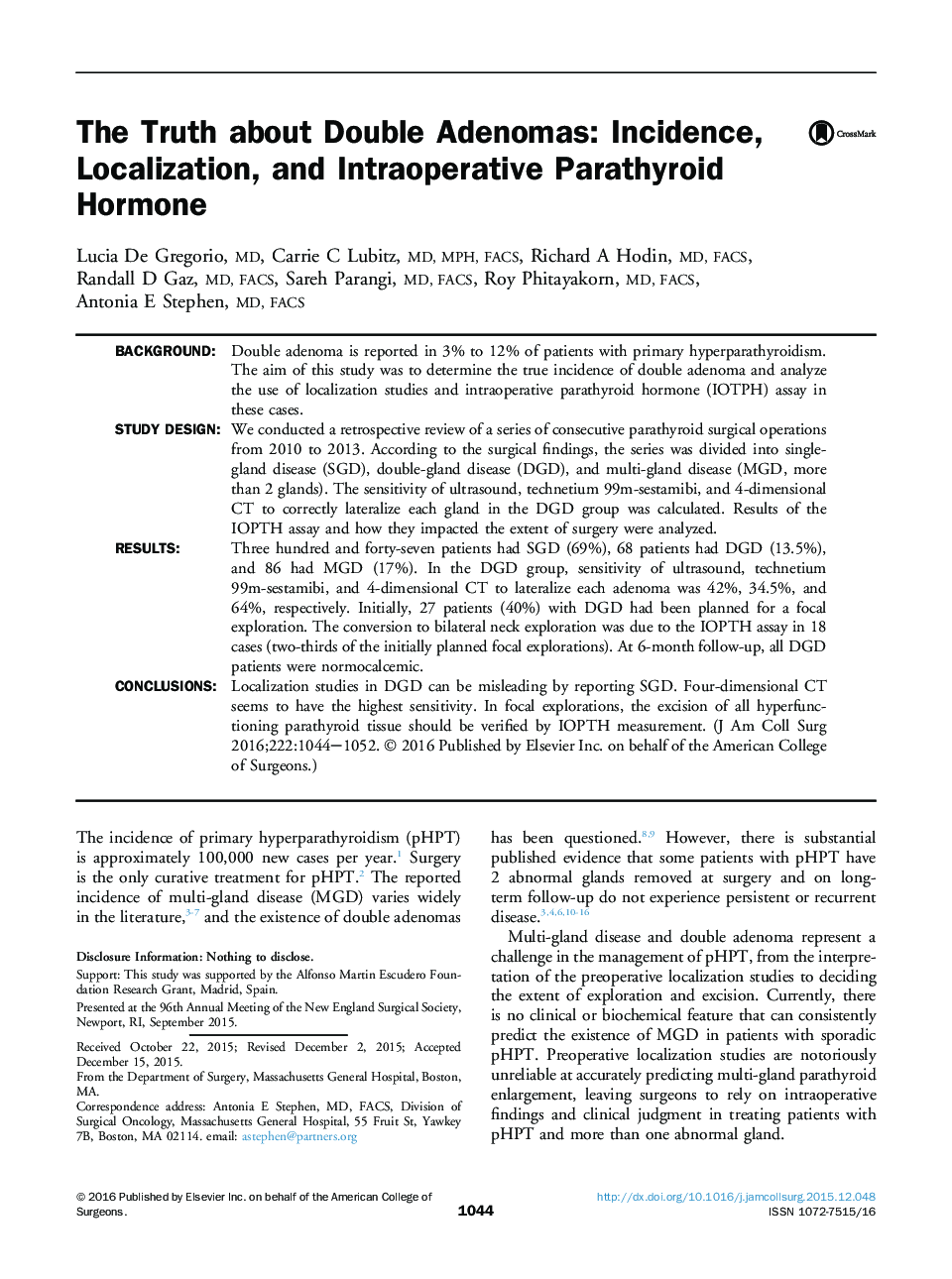| کد مقاله | کد نشریه | سال انتشار | مقاله انگلیسی | نسخه تمام متن |
|---|---|---|---|---|
| 4290576 | 1612205 | 2016 | 9 صفحه PDF | دانلود رایگان |
BackgroundDouble adenoma is reported in 3% to 12% of patients with primary hyperparathyroidism. The aim of this study was to determine the true incidence of double adenoma and analyze the use of localization studies and intraoperative parathyroid hormone (IOTPH) assay in these cases.Study DesignWe conducted a retrospective review of a series of consecutive parathyroid surgical operations from 2010 to 2013. According to the surgical findings, the series was divided into single-gland disease (SGD), double-gland disease (DGD), and multi-gland disease (MGD, more than 2 glands). The sensitivity of ultrasound, technetium 99m-sestamibi, and 4-dimensional CT to correctly lateralize each gland in the DGD group was calculated. Results of the IOPTH assay and how they impacted the extent of surgery were analyzed.ResultsThree hundred and forty-seven patients had SGD (69%), 68 patients had DGD (13.5%), and 86 had MGD (17%). In the DGD group, sensitivity of ultrasound, technetium 99m-sestamibi, and 4-dimensional CT to lateralize each adenoma was 42%, 34.5%, and 64%, respectively. Initially, 27 patients (40%) with DGD had been planned for a focal exploration. The conversion to bilateral neck exploration was due to the IOPTH assay in 18 cases (two-thirds of the initially planned focal explorations). At 6-month follow-up, all DGD patients were normocalcemic.ConclusionsLocalization studies in DGD can be misleading by reporting SGD. Four-dimensional CT seems to have the highest sensitivity. In focal explorations, the excision of all hyperfunctioning parathyroid tissue should be verified by IOPTH measurement.
Journal: Journal of the American College of Surgeons - Volume 222, Issue 6, June 2016, Pages 1044–1052
